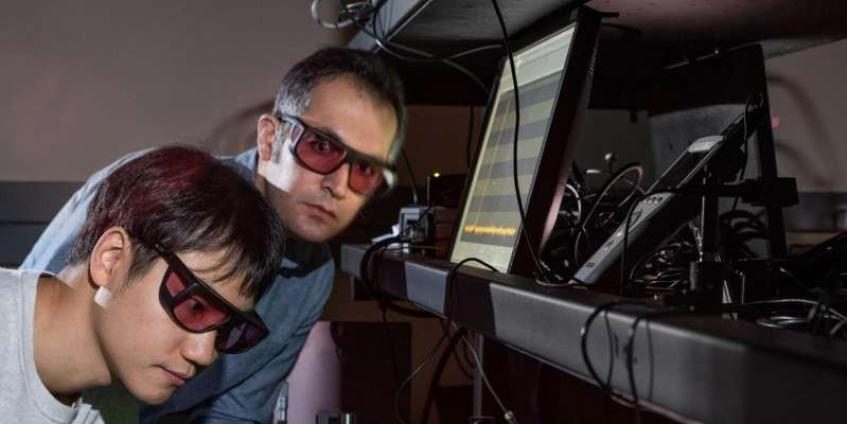Researchers have demonstrated a new all-optical technique for creating robust second-order nonlinear effects in materials that don”t normally support them. Using a laser pulse fired at an array of gold triangles on a titanium dioxide (TiO2) slab, the researchers created excited electrons that briefly doubled the frequency of a beam from a second laser as it bounced off the amorphous TiO2 slab.
By widening the range of optical materials useful for micro- and nanoscale optoelectronic applications, the work could give optical engineers new options for creating second-order nonlinear effects, which are important in such areas as optical computers, high-speed data processors, and bioimaging safe for use in the human body.


